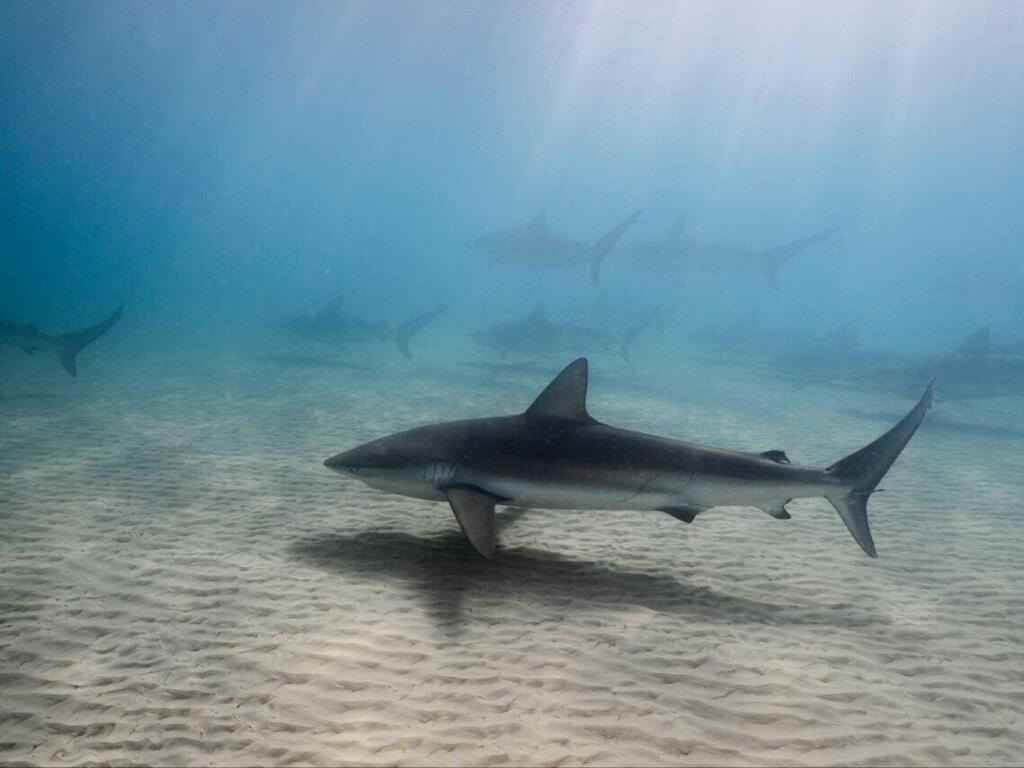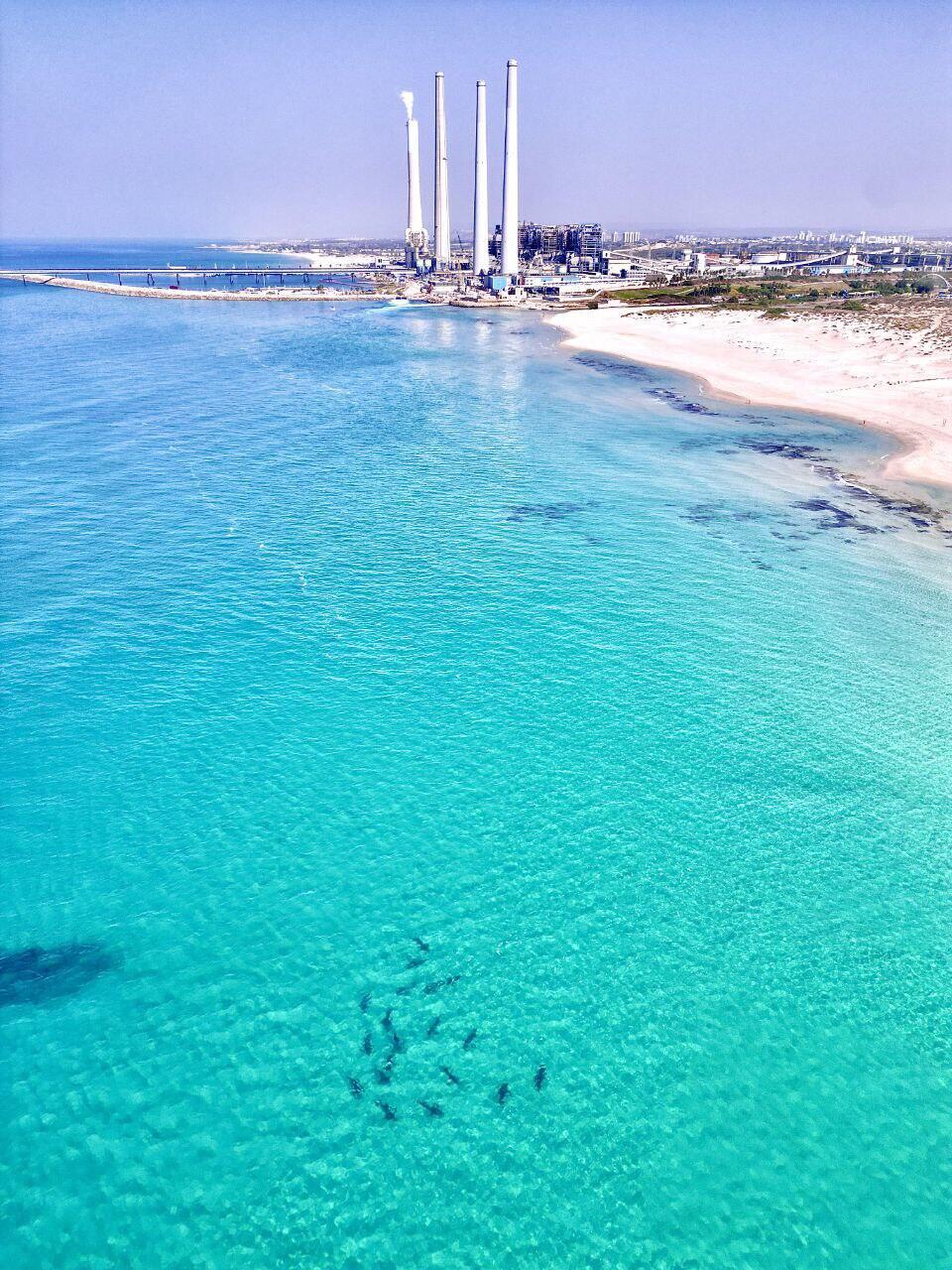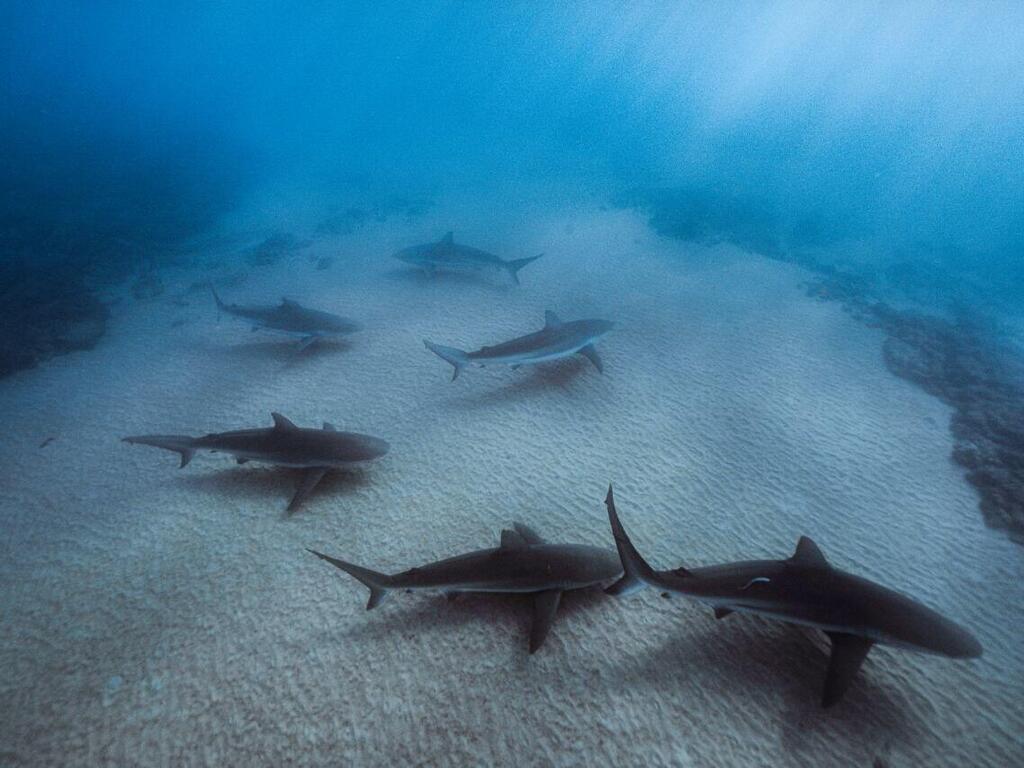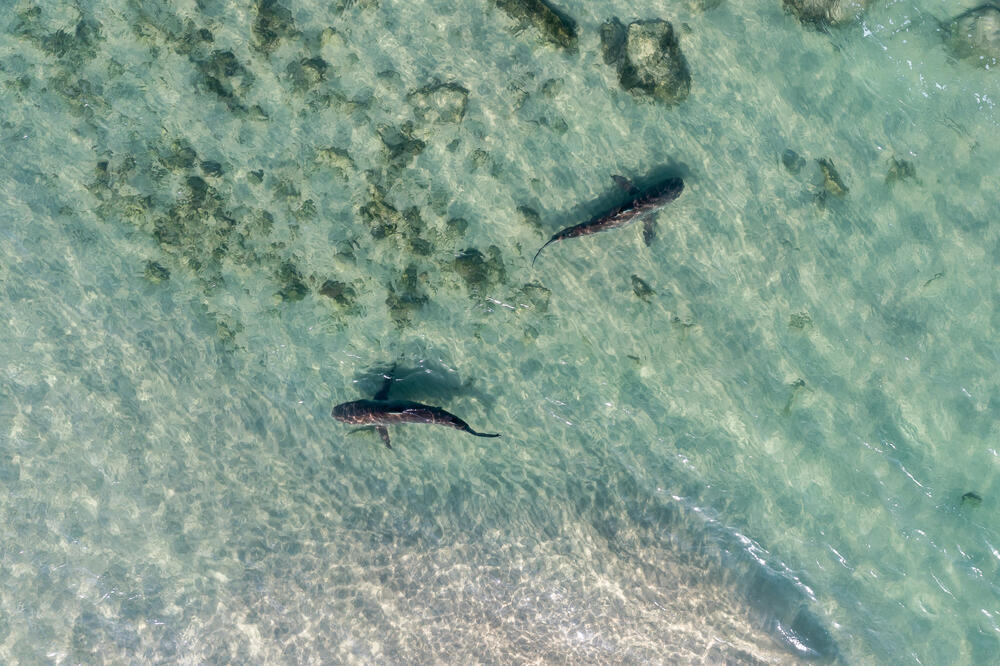Getting your Trinity Audio player ready...
Swimming with sharks might sound terrifying, but in Israel, it’s more familiar than fearsome. For years, these marine predators have cruised along the country’s coastline, particularly near Hadera. There, just off the beach, dozens of sharks gather annually in the warm waters discharged by the Orot Rabin power station—an unusual ecological hotspot and the unlikely setting for one of nature’s most captivating spectacles.
Sharks have been around far longer than humans. Their cartilaginous ancestors first appeared some 420 million years ago, evolving over time into the apex predators we know today. Their resilience—surviving three mass extinction events—speaks to their adaptability. By the Jurassic period, around 150 million years ago, sharks had developed many of the traits we associate with modern species.
In today’s oceans, sharks are vital players in marine ecosystems, controlling prey populations and helping maintain the balance of life underwater. Israel, thanks to robust environmental protection laws, has become a sanctuary of sorts, especially between November and May. During these months, 40 to 80 sharks congregate near the power station at Hadera, where seawater used to cool turbines returns to the sea nearly 10 degrees warmer, generating currents felt up to a mile offshore.
Drawn to the heat
Why do the sharks come? The warm water is a likely factor. It may attract smaller fish, creating a seasonal buffet. But researchers believe there’s more to the story. Dr. Adi Barash, a marine biologist with Sharks in Israel and the Steinhardt Museum of Natural History at Tel Aviv University, says the sharks aren’t mating—males and females belong to different species and no juveniles have been spotted. Instead, the thermal conditions may offer benefits to pregnant females or signal a resting point for migrating males.
Most of the sharks in Hadera belong to two species: pregnant females of the dusky shark (Carcharhinus obscurus) and male sandbar sharks (Carcharhinus plumbeus). Neither species is considered dangerous to humans. Remarkably, these species manage to share the same limited space thanks to what researchers call “thermal layering.” Dusky sharks swim about six feet above sandbar sharks, with the two switching depths between day and night in what looks like a carefully choreographed routine.
In the broader Mediterranean, sharks have become increasingly scarce. Overfishing, pollution and habitat loss have decimated populations. The dusky shark, which can grow up to 14 feet and weigh over 750 pounds, is particularly vulnerable due to its slow reproductive cycle. It preys on a variety of marine life, from barracuda and tuna to squid and crustaceans, and can live up to 40 years. Though rarely aggressive, it may bite if provoked.
The sandbar shark, smaller and more elusive, usually measures about eight feet in length and prefers sandy seabeds at depths of 60 to 200 feet. Known as a “shy” species, it typically avoids divers. Still, during spring migration, it can be spotted closer to shore, especially around Passover.
Hadera isn’t the only site where sharks gather near warm-water discharges. Similar gatherings have been observed near power stations in Ashkelon and Ashdod, though these are harder to monitor due to infrastructure design and security restrictions. Hadera remains the most accessible and popular site, drawing curious crowds every sunny weekend. With clear waters and frequent sightings, it has become a prime location for shark watchers, photographers and researchers alike.
Despite their fearsome reputation, shark attacks in Israel are extremely rare—none have occurred near Hadera in the past 20 years. Still, Barash advises keeping a respectful distance. “Sharks are a protected species in Israel,” she says. “Fishing them is illegal. But because fishing for other species is allowed nearby, many sharks are seen with hooks lodged in their mouths or fins.”
She urges visitors not to feed or touch the sharks, as this can stress the animals or provoke unpredictable behavior. The strong currents near the power station make swimming hazardous, particularly for children or inexperienced swimmers. “If you must enter the water, do so south of the river mouth, where the current is weaker,” she says.
Education, conservation and community science
Sharks in Israel, the nonprofit Barash helps lead, was founded to study and protect these misunderstood creatures. With help from the public, the group collects sightings, runs public education stands near the power station on weekends and holidays, and partners with environmental and diving organizations to raise awareness.
For those who want to get even closer, the group offers guided tours for adults and families, where participants learn about shark biology, migration, and conservation—and even hunt for fossilized shark teeth on the beach.
Israel’s work mirrors global conservation efforts. In California, for instance, white sharks have been protected as a “natural resource,” leading to significant population recovery. Marine nature reserves, where fishing and seismic exploration are banned, have seen thriving ecosystems and greater species diversity.
Get the Ynetnews app on your smartphone: Google Play: https://bit.ly/4eJ37pE | Apple App Store: https://bit.ly/3ZL7iNv
“Sharks play a critical role in marine health,” Barash says. “They help transport nutrients between ocean layers and support carbon cycling. Their presence shapes ecosystems in ways we’re only beginning to understand.”
So next time you hear about sharks off Israel’s coast, don’t think danger—think wonder. Just a few feet beneath the surface, one of nature’s most ancient and misunderstood creatures swims by, offering a rare glimpse into the wild heart of the Mediterranean.





